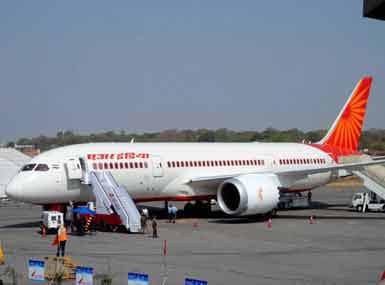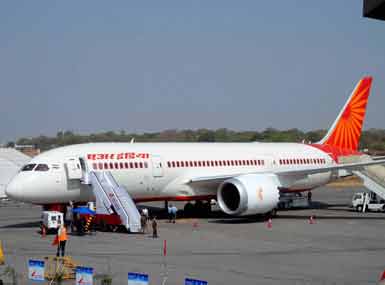New Delhi: Air India has seven Airbus 320 aircraft in its fleet which are more than 20 years old. This means every third Airbus 320 aircraft in Air India’s fleet of 21 Airbus 320s is an old war horse. No one should be surprised by this surprising statistics given the state of affairs at India’s national carrier. Last year, Air India’s board of directors had approved of a plan to take eight new Airbus 320 aircraft on lease to ease out these old war horses but only three have been delivered till now. [caption id=“attachment_2424658” align=“alignleft” width=“385”]  Representational image. PTI[/caption] The condition of Air India’s fleet is in focus now, after an incident yesterday night where one of the old aircraft developed hydraulic failure while approaching Delhi on a Varanasi-Delhi flight with 146 passengers on board. The pilot was forced to seek emergency landing from the ATC at Delhi. Later, there were reports of some sparks from the rear of the aircraft, after landing, which forced the captain to order evacuation using chutes - and lead to some passengers sustaining minor injuries. Also Read: Germanwings airline crash throws spotlight on Air India's ancient Airbus A320s A source said the pilots of this aircraft realised that their controls were not functioning properly “15-20 minutes” before the scheduled landing at Delhi and requested the ATC for emergency landing. They said due to hydraulic failure, the pilots resorted to hard braking while landing which lead to sparks at the rear. So what could Air India have done to prevent yesterday’s incident? Aviation regulator DGCA has been steadfast in denying any lapse on the part of Air India in continuing to use such old planes, saying these are air worthy. It has now ordered a full investigation into yesterday’s incident. But meanwhile there have been reports of passengers alleging that technical problems with the aircraft were known before the flight took off from Varanasi. If that is the case, a thorough investigation into the maintenance and other protocols is the need of the hour from Air India and its new chairman and MD Ashwani Lohani. In fact, Lohani has already flagged a host of maintenance and fleet issues while reviewing the airline’s performance all of last week - he took charge earlier this month. Before yesterday’s incident, Lohani has already flagged various areas of concern and focus going forward for the airline. These include: 1. Asking engineering staff to ensure that at least four more Airbus 320 family aircraft are made available for flights by the end of the month. A320 family includes A 319, A 320 and A321 aircraft. Recurring maintenance issues mean on any given day, Air India has only about 52 aircraft available for use despite having a fleet of 64 in the A320 family. This severely restricts its ability to compete with private carriers on domestic routes and also obviously forces it to sometimes use very old aircraft which should otherwise have been grounded long back. 2. The new CMD has also tasked engineering subsidiary AIESL with drawing up a detailed plan for spending the $300 million raised through ECBs earlier which Air India’s board has already said should be deployed in maintenance of Air India’s fleet. 3. Lohani also wants a detailed business plan from AIESL for the Nagpur MRO (maintenance, repair and overhaul) unit. As per the Turnaround Plan under which Air India has been receiving equity support from the government, the airline should have had 72 narrow body aircraft in its fleet by now. It has been looking to lease 19 narrow bodies in all (including the 8 320s) but 14 of these may arrive only by 2017. The airline needs a plan of action much before then, at least for its domestic operations.
Aviation regulator DGCA has been steadfast in denying any lapse on the part of Air India in continuing to use such old planes, saying these are air worthy.
Advertisement
End of Article


)

)
)
)
)
)
)
)
)



